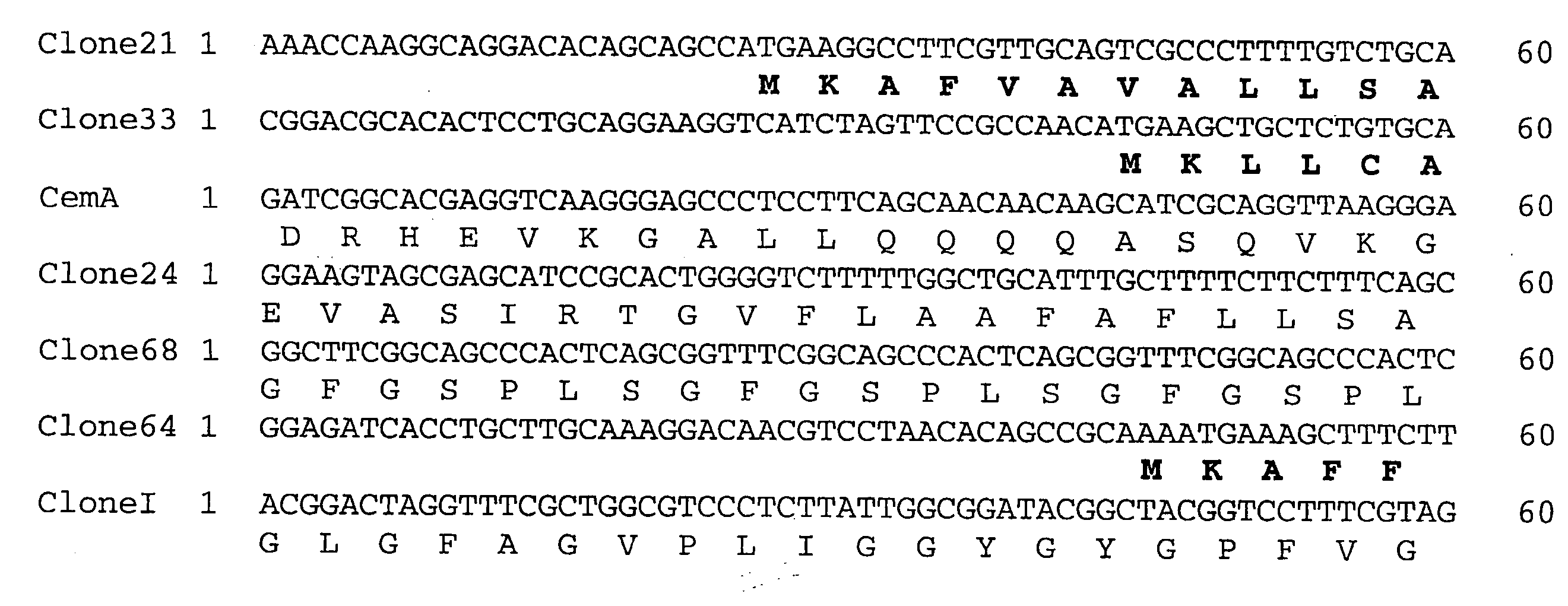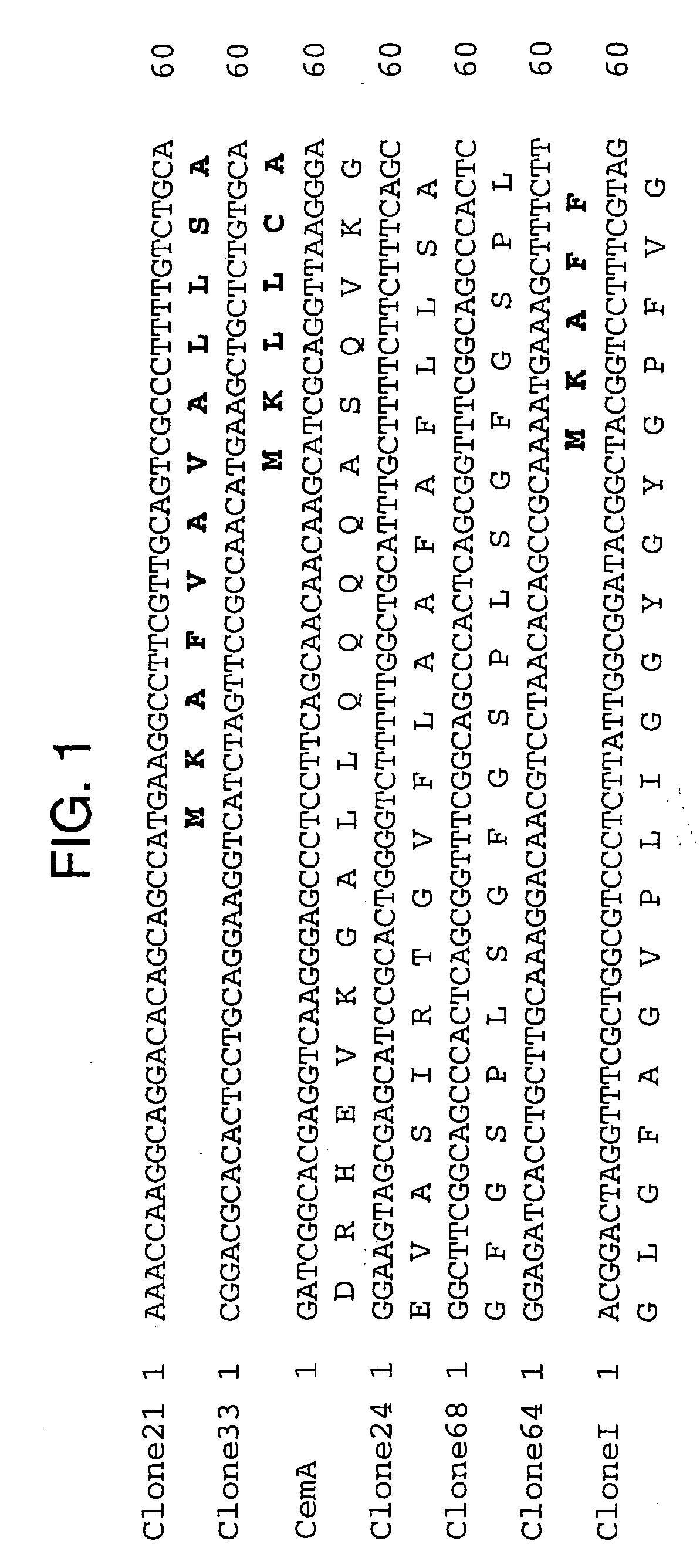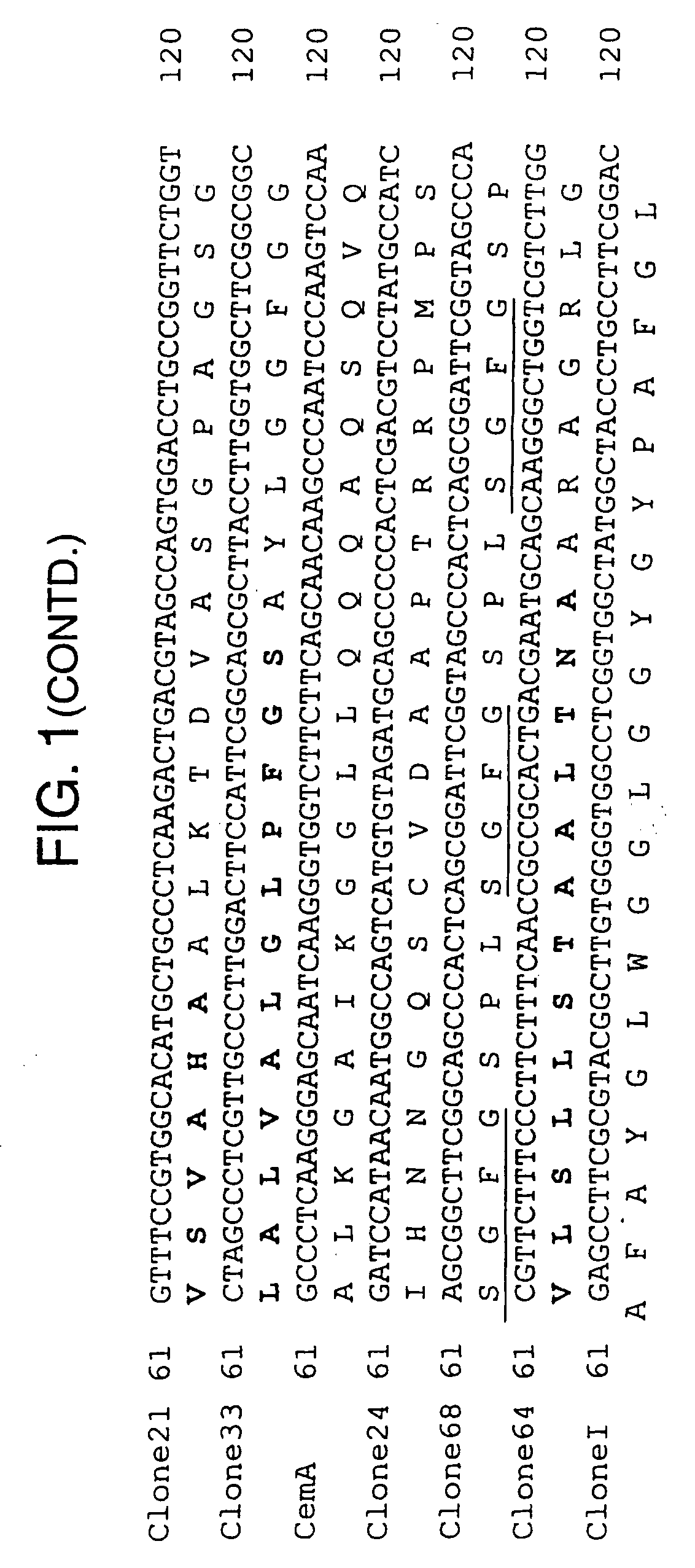Vaccine against infectious disease
a technology for infectious diseases and vaccines, applied in the field of vaccines against infectious diseases, can solve the problems of affecting the leather industry, no vaccines have yet been developed that provide resistance, and none of these strategies have shown any enduring success, and achieve the effect of increasing the efficiency of eradication of ectoparasites and being cheap to produ
- Summary
- Abstract
- Description
- Claims
- Application Information
AI Technical Summary
Benefits of technology
Problems solved by technology
Method used
Image
Examples
example 1
Cross-Reactivity and Cross-Protection Vaccine Trial with Insects
1.1 Selection of Immunogens
[0079] Candidate immunogens were identified on the basis of whether antiserum to the construct detected specific cross-reacting antigens in extracts of mosquitoes and fleas.
[0080] Cross-reactivity studies using immunoblotting with 64trp antisera showed detection of protein bands with mosquito extracts of Anopheles gambiae salivary gland and midgut, Aedes aegypti midgut, and Culex quinquefasciatus salivary gland and midgut (FIG. 3).
[0081] Using 64trp2 antiserum (FIG. 4A), two major bands (a and b) were detected in all extracts.
[0082] Antisera to 64 trp5 (FIG. 4B) detected several less pronounced bands in midgut of An. gambiae and C. quinquefasciatus. Antiserum to 64trp6 detected a prominent band in An. gambiae midgut (FIG. 4C).
[0083] The control antiserum raised against GST detected very faint bands in midgut of An. gambiae and C. quinquefasciatus that differed in size from those detecte...
example 2
Antigenic Cross-Reactivity Between Rhipicephalus appendiculatus and Ctenocephalides felis Cat Flea Detected by Immunoblotting Using Antisera to R. appendiculatus Cement Protein 64 trp Constructs
[0111] Antisera to 64trp 2, 64trp5, and 64trp6 showed strong cross-reactivities in immunoblots of whole cat flea extract probed with the respective antisera (FIG. 5). The results are summarised in Table 2 below. Single cross-reactions were also detected with anti-64trp3 and anti-GST sera. The cross-reactivities demonstrate the potential for developing an anti-flea vaccine using the tick cement protein.
TABLE 2Cross-reactivity between Rhipicephalus appendiculatus andCtenocephalides felis whole flea extract using sera from guinea pigsimmunised with 64 trp recombinant antigensTick AntigensAntiserumCCSGgutHNLC. felisAnti-64trp2 ab′+++++++(50a.a. N-term. Frag. of64P) Effective againstRA Adult / nymph ticks(soluble antigen)Anti-64trp3 ab′+++++−++(70a.a. N-term. Frag. of64P) Effective againstRA Adul...
example 3
Evaluation of 64p Anti-Tick Vaccine Constructs for Their Ability to Protect Mice Against Tick-Borne Encephalitis (TBE) Virus Infection
3.1 Selection of Immunogens
[0112] Candidate immunogens were selected on the basis of whether antiserum to the 64TRP constructs detected specific cross-reacting antigens in extracts of Ixodes ricinus, the tick vector of TBE virus (see Table 3 of WO01 / 80881).
3.2 Treatments for Vaccine Trial (Trial 1):
[0113] Group A: Recombinant 64trp2+TiterMax Gold (TMG) (10 mice) [0114] Group B: Recombinant 64trp5+TMG (10 mice) [0115] Group C: Recombinant 64trp2+64trp6+TMG (10 mice) [0116] Group D: Recombinant 64trp5+64trp6+TMG (10 mice) [0117] Group E: Recombinant 64trp2+64trp5+TMG (10 mice) [0118] Group F: GST protein (10 mice) [0119] Group G: TMG (10 mice) [0120] Group H: untreated (10 mice)
Total number of animals=80 Balb / c mice.
[0121] Subcutaneous inoculation in the prescapular region either singly or as combined antigens into a single...
PUM
| Property | Measurement | Unit |
|---|---|---|
| Fraction | aaaaa | aaaaa |
| Fraction | aaaaa | aaaaa |
| Fraction | aaaaa | aaaaa |
Abstract
Description
Claims
Application Information
 Login to View More
Login to View More - R&D
- Intellectual Property
- Life Sciences
- Materials
- Tech Scout
- Unparalleled Data Quality
- Higher Quality Content
- 60% Fewer Hallucinations
Browse by: Latest US Patents, China's latest patents, Technical Efficacy Thesaurus, Application Domain, Technology Topic, Popular Technical Reports.
© 2025 PatSnap. All rights reserved.Legal|Privacy policy|Modern Slavery Act Transparency Statement|Sitemap|About US| Contact US: help@patsnap.com



